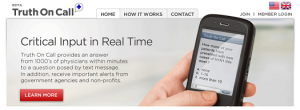Quantified Self: Adidas Releases miCoach Mobile App for Free
Earlier this year, Adidas released its answer to Nike+: an iPod-connected pedometer and platform called miCoach Pacer that aims to be your personal coach and trainer. Yesterday, the company began offering a free miCoach app for iPhone and BlackBerry users--no additional hardware required.
According to Fast Company:
Rather than simply collect data, the free app provides workouts and conditioning pegged to specific sports, including tennis, soccer, and football, among others. "Everyone needs a coach," says Andy Graham, director of miCoach mobile, who gave Fast Company a demo last week. "You really need someone running alongside you."
Adidas miCoach gives runners a real-time audible training system, which features pace-triggered voice coaching and personalized workout plans designed by professional trainers. The app will tell you how fast to run and how much distance you have to go.
While the application doesn't monitor your heart rate, it still collects plenty of information about your physical activity. Like RunKeeper, a similar free app, miCoach uses the iPhone's GPS to track a runner's location and visualize routes using Google Maps. Speed, distance, and elevation are also mapped using a phone's built-in sensors.
Releasing the miCoach app for free is a smart move, but an existing and active community gives Nike+ a huge head start. Social activity around a service acts as a gravitational force; Adidas' miCoach Forum seems forced when compared to Nike's social challenges and group-based feedback loops. On Nike+, over eight thousand people participate in "Men vs. Women", where each gender compete to run the most kilometers over 365 days. Four and a half thousand are working to earn the fastest kilometer by the end of the year. This social component gives Nike an edge and is an obvious pull for potential users.
That being said, there are those who will be satisfied with Adidas' service and its ability to track as well as coach. The $0 price tag will likely encourage trial, and perhaps more "quantifying themselves". As smartphones become the new norm, so will our drive to constantly monitor, measure, and optimize ourselves. Looking back, we'll find that acting without this data feels like stumbling through the dark.
















